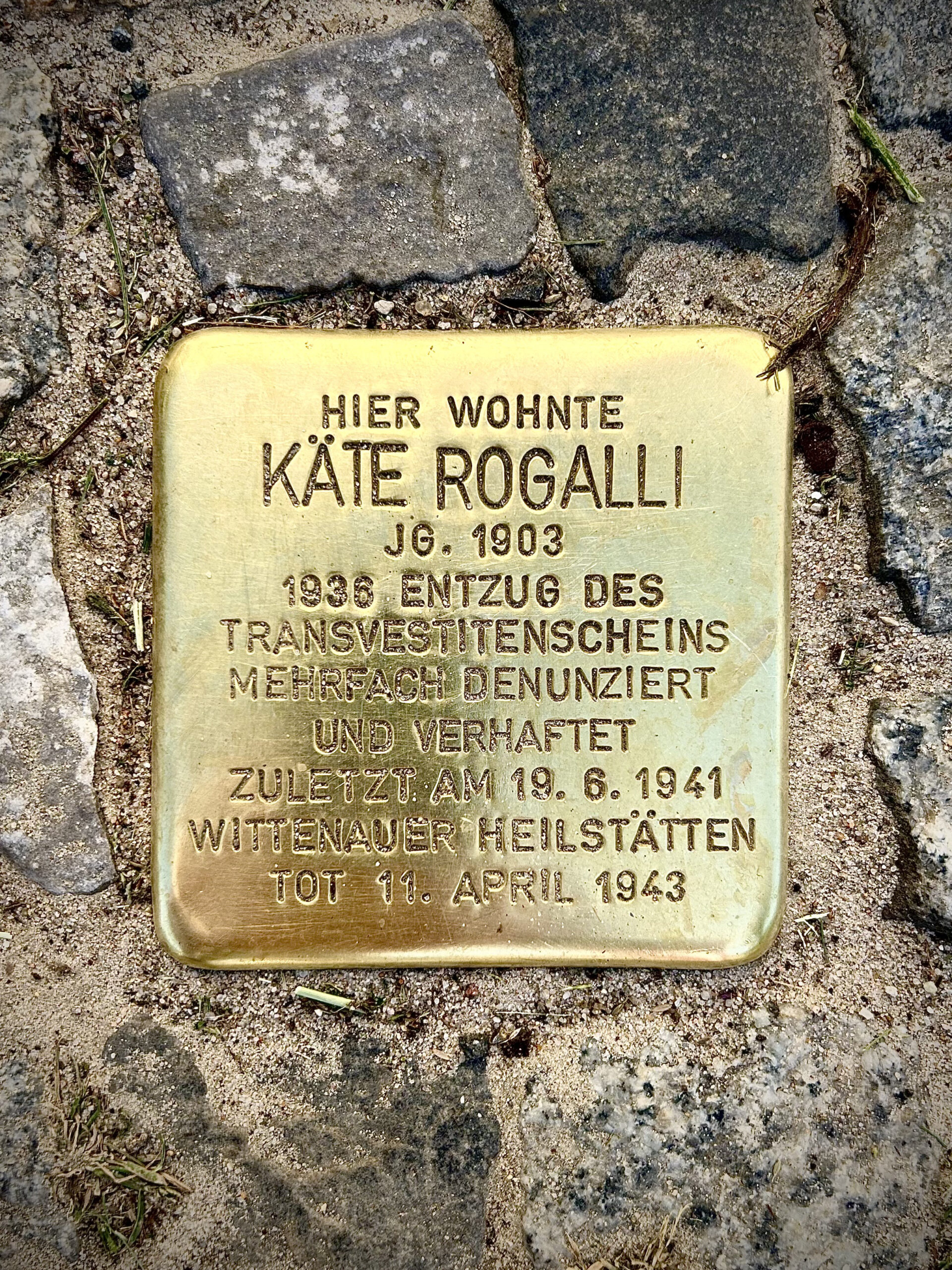
Käte Rogalli is the first trans person to be commemorated with a stumble stone with her real name engraved on it
Käte Rogalli is not the first trans person to be commemorated with a Stolperstein. However, she is the first to have her real name – not her deadname (name given to her at birth) – engraved.
The stumble stone was laid on August 31, 2023 in front of her former home on Hagelberger Straße in Kreuzberg.
Käte was born in 1903 in Berlin and was assigned male at birth. When she was young, she worked as a technical draughtsman and precision mechanic. She was often mistaken for a girl in men’s clothing and ended up losing her job due to discrimination in the workplace.
However, in the middle of the 1920’s she got in touch with the Institute for Sexual Science, where founder Magnus Hirschfeld researched gender and sexuality. The institute was also a gathering place for Berlin’s LGBT+ community – and in particular Berlin’s trans women.
In his research, Hirschfeld had found that transgenderism was an innate characteristic and that trans women were not gay men dressed immodestly in women’s clothing. Hirschfeld coined the word ‘transvestite’ to describe what we now call trans women.
This was of great importance in Germany at the time, as the infamous Paragraph 175 of the penal code prohibited male prostitution and men from having sexual intercourse with each other. Among other things, the paragraph meant that the police often arrested gay men.
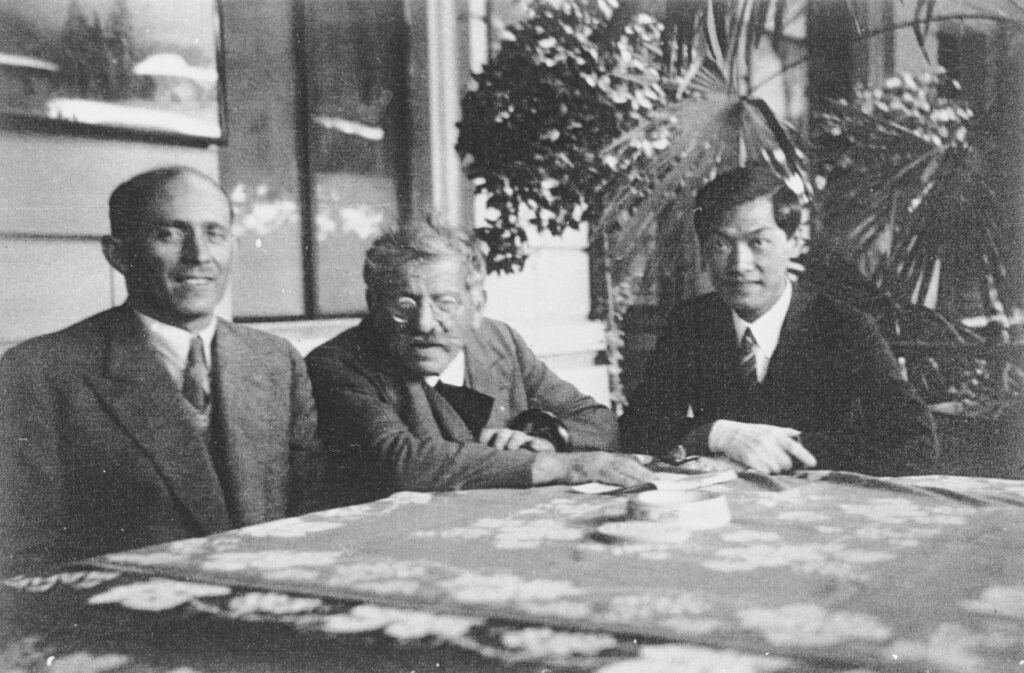
Hirschfeld used his research to make a deal with the police to leave trans women alone. The Institute for Sexual Science was licensed to issue the so-called transvestite certificate to the trans women, and with that in hand, the trans women avoided being arrested as gay men in women’s clothing. Now they were in a category outside Paragraph 175.
Käte was issued such a transvestite certificate in 1926. She also used her certificate to change her birth name with the authorities. However, not for the name Käte, which she wanted, because the authorities only offered a limited list of names to choose from.
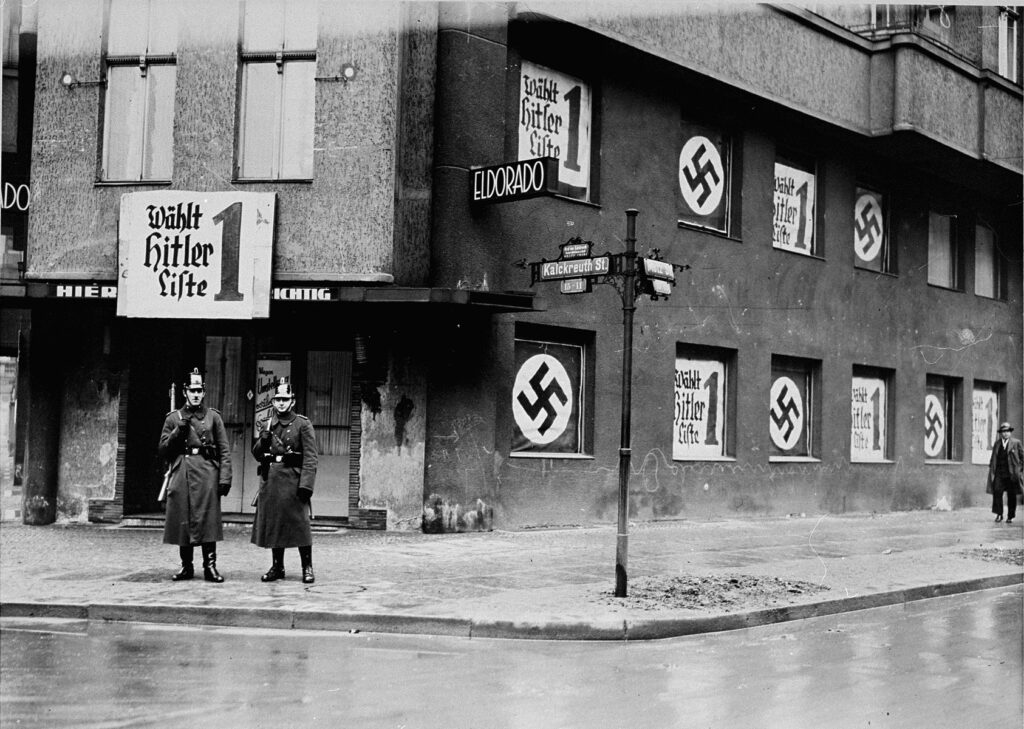
Photo: Landesarchiv Berlin
Society changed radically when Hitler and the Nazis took power in Germany in 1933. Among other things, the Nazi regime changed Paragraph 175 so that minor offenses were required to be arrested and convicted. And the punishment was increased to five years in prison – that is, internment in a concentration camp.
This had a huge impact on trans women like Käte. In 1936, she was arrested by the Gestapo and had her transvestite certificate revoked. She was also forced to wear men’s clothes and thus considered a gay man by the Nazis. Shortly after, she was arrested again for wearing women’s clothes.
The following year, the punishment came. Internment in the Sachsenhausen concentration camp in Oranienburg, where many others from Berlin’s LGBT+ community had been imprisoned wearing prison garb with the inverted pink triangle. The pink triangle was dedicated to gays (men) in the concentration camps and was the cause of violence and discrimination from the other prisoners.
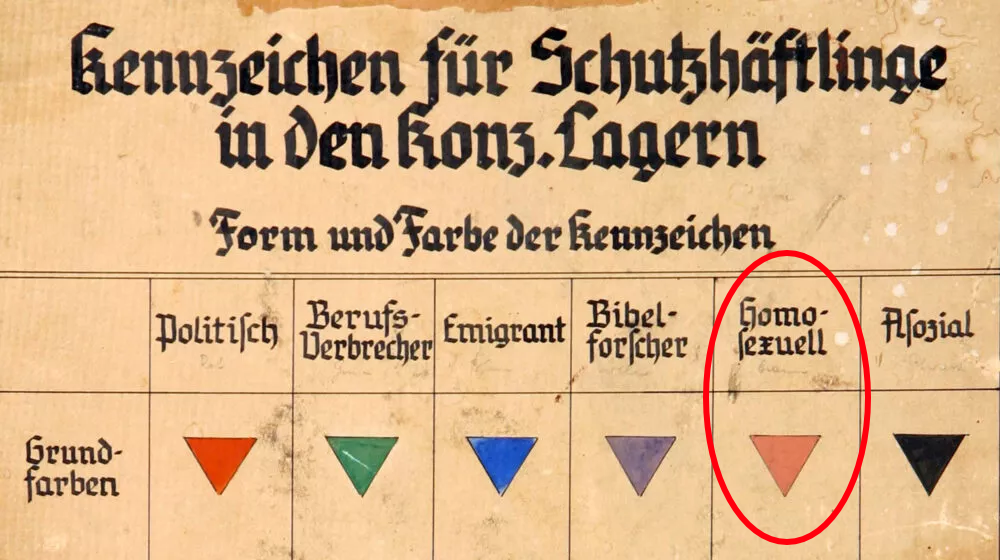
Here Käte was interned for a little over a year until 1938, when she was again taken to court and sentenced to two years of forced labor building the so-called Ostmarkstraße in eastern Bavaria.
Upon her release, Käte returned to Berlin and moved into the address on Hagelberger Straße. Only a year later, she was arrested again, found ‘insane’ in court and committed to the psychiatric institution Wittenauer Heilstätten (Karl-Bonhoeffer-Nervenklinik) in northern Berlin.
The institution is just one of many that were involved in Hitler’s Aktion T4, which aimed to exterminate people deemed unworthy of life. These were typically people with severe disabilities and the mentally ill. In other words: It was systematic mass murder carried out secretly in psychiatric institutions by doctors. And the death certificates listed a completely different cause of death, such as heart attack or suicide.
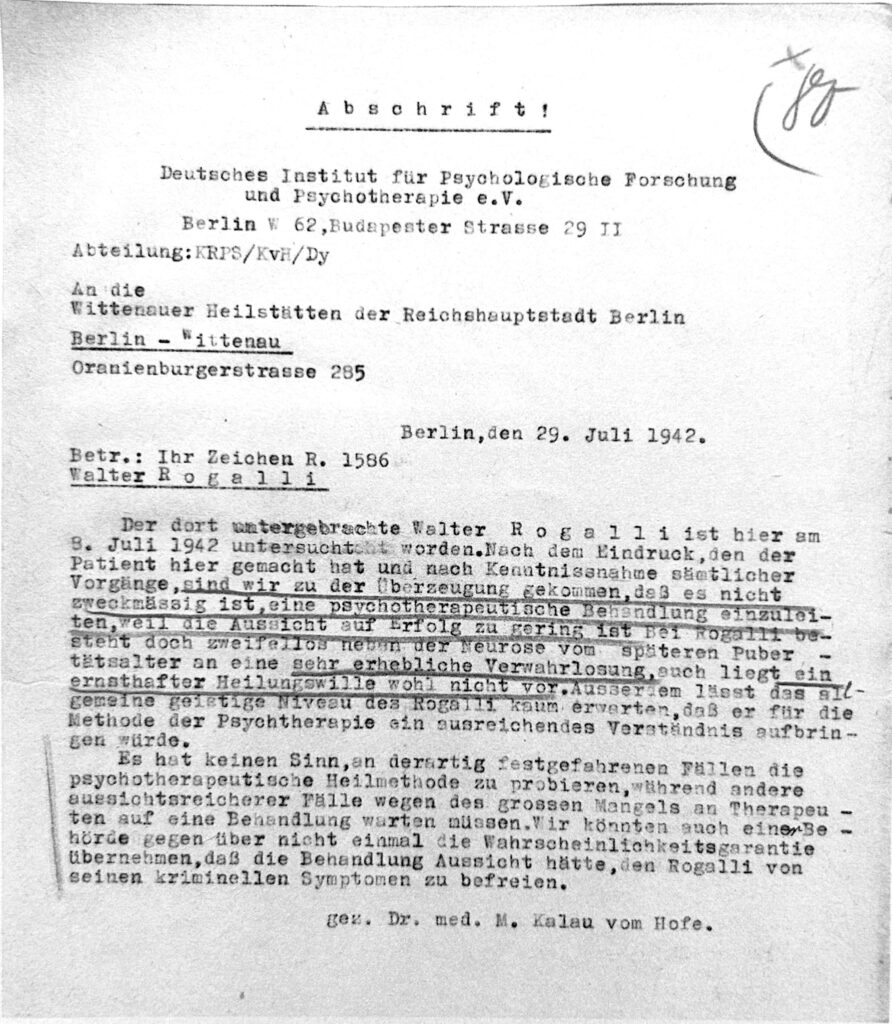
Suddenly, Käte was a patient in one of these infamous institutions. Two years later, she allegedly hanged herself in a toilet at the institution because there was no prospect of release.
Käte died in National Socialist custody on April 11, 1943.
80 years later, she became the first transgender to receive a Stolperstein with her real name engraved on it.
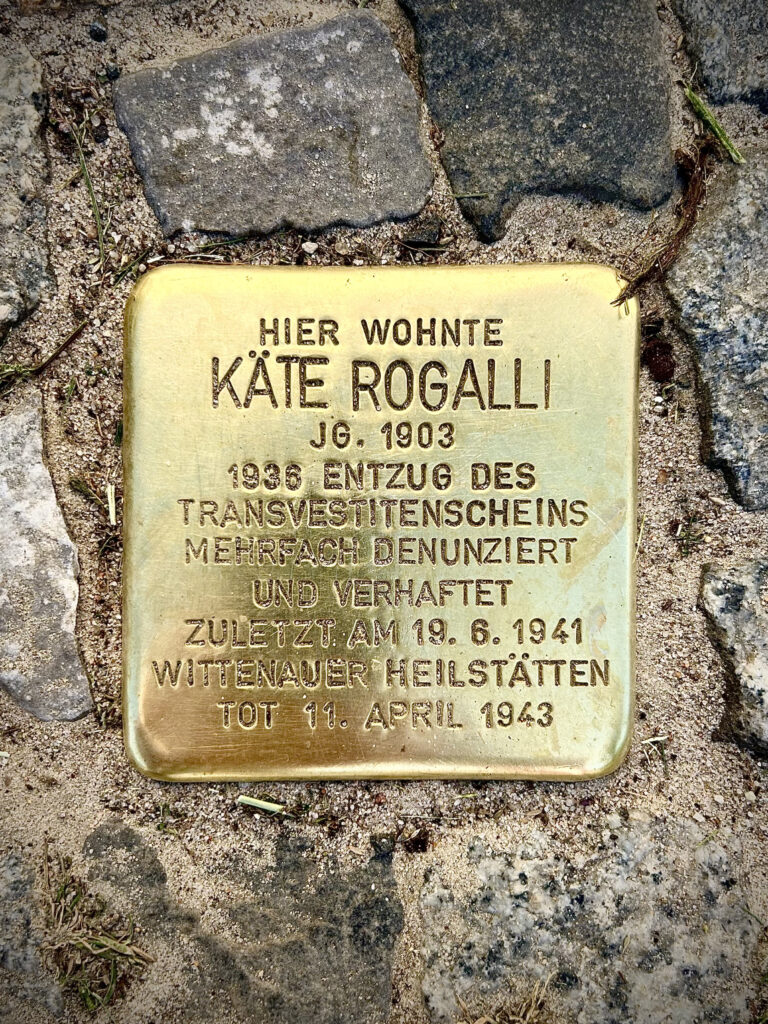
Photo by Chrissie Sternschnuppe@Flickr. CC BY-SA

Where:
Hagelberger Straße 21, 10965 Berlin
Family friendly: Yes
Price: Free

Leave a Reply